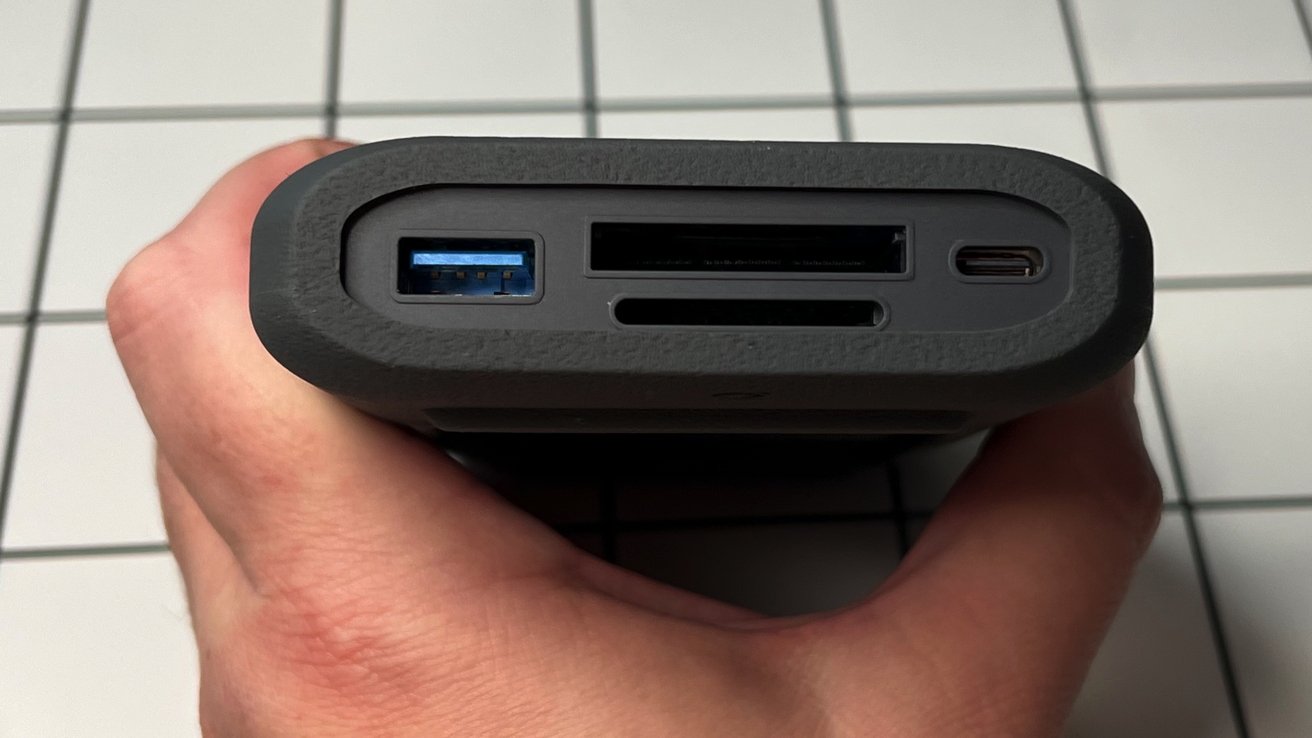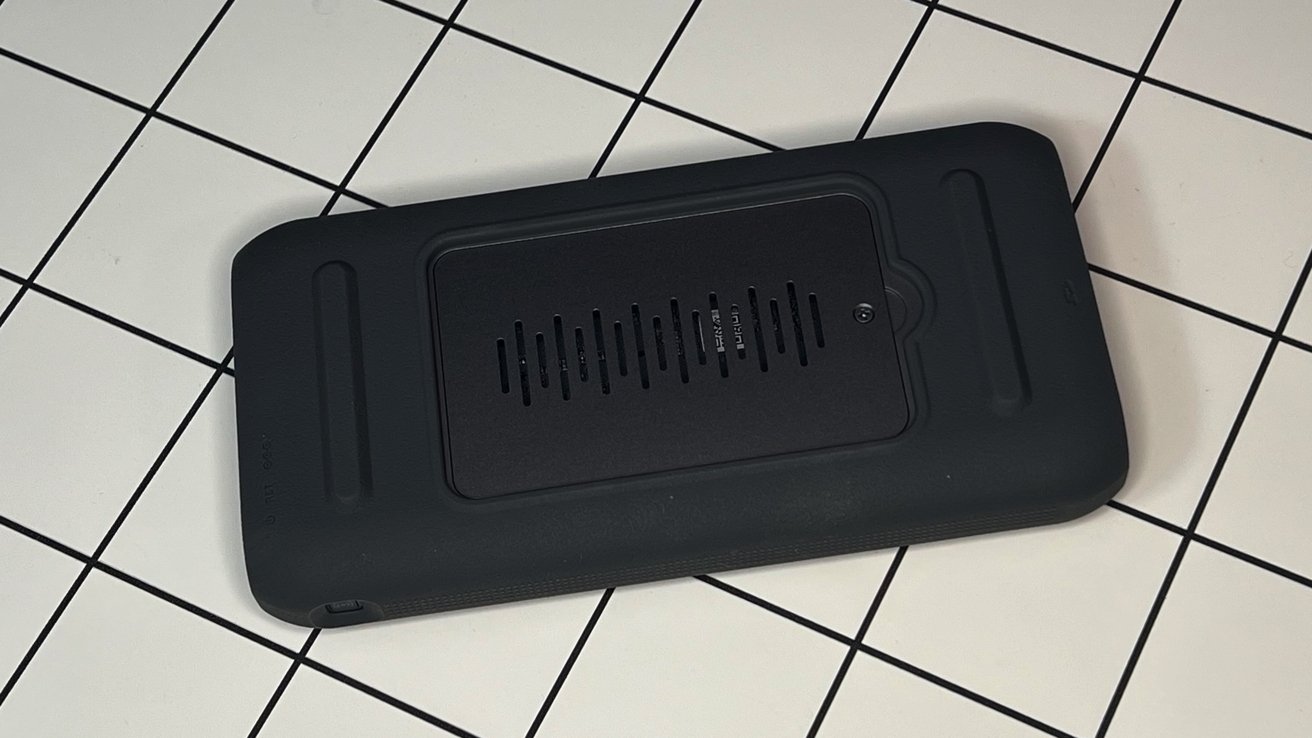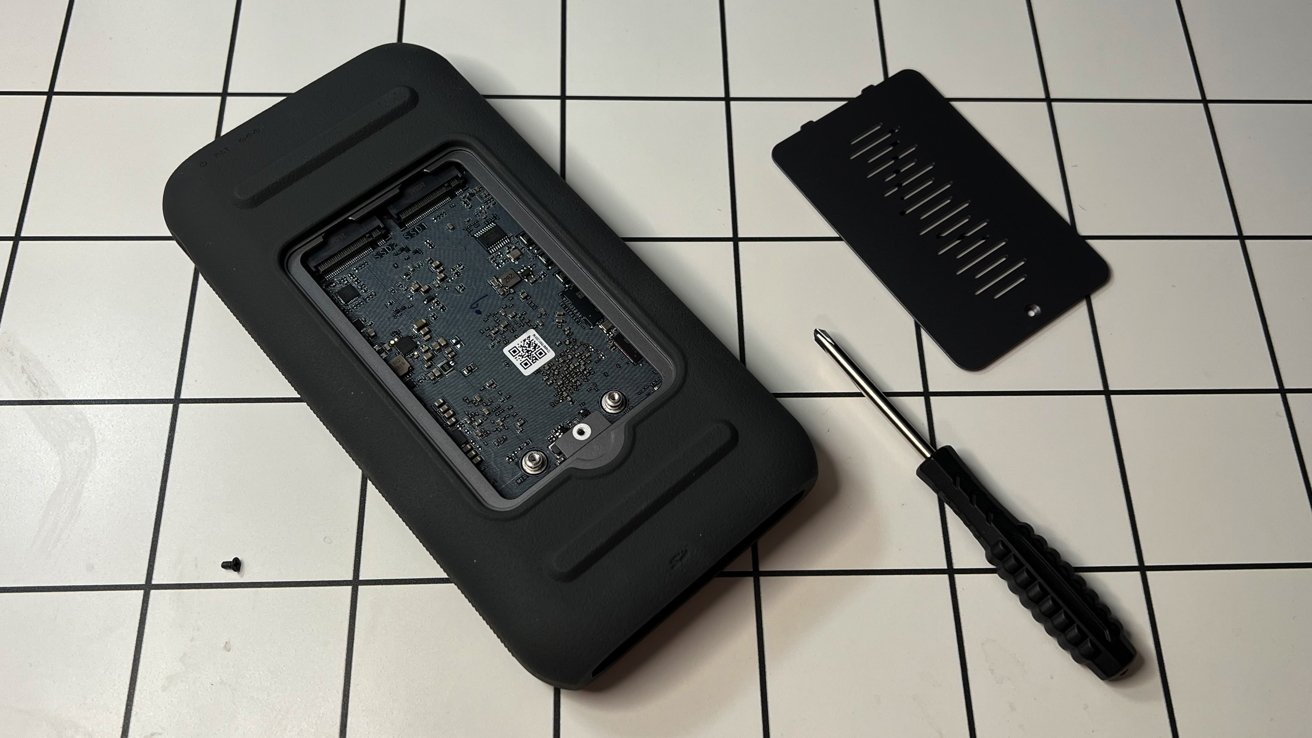A battery powered and portable network attached storage device sounds like an excellent idea, but in early access the UnifyDrive UT2 has a few too many limitations to recommend it whole-heartedly.
Data storage is a big problem for content creators working on the go, or in the field. While you can offload memory cards or wait until you go back to base, it would be better to have the option to do it while on location.
External drives may also be seen as an obvious answer to the problem. But even then, you don’t get the benefits of redundancy in a multi-disk setup like a network-attached storage device.
The UnifyDrive UT2, presently in crowdfunding, works around that by offering the usefulness of network-attached storage (NAS) while working remotely.
UnifyDrive UT2 review: Slim, portable, network attached storage
Most network-attached storage devices are giant and heavy. The idea of the UT2 is that it is a NAS that’s also highly portable and battery-powered.
The UnifyDrive UT2 has an aluminum enclosure guarded by a silicone bumper. It has many design cues taken from other external drives.
This includes a relatively compact size of 6.7 inches by 3.3 inches and 0.8 inches thick. The ends are where the ports are located, with one including a USB-C port for power, 2.5Gb Ethernet, HDMI, and a power button. The other end has an SD/TF card slot, a CFe Type B/A card slot, a USB-A port, and a USB-C connection.
The outside also has discrete vents on the sides. At the top edge, there is a selection of indicator LEDs.
As the port selection hints, there’s a lot more going on than this being a mere external drive.
UnifyDrive UT2 review: Storage and performance
For a start, it functions as a NAS, which means it has a pair of SSDs inside. It supports up to 16TB, which is quite a lot of capacity for a portable device.
That’s great, but for a device intended to be portable and brought into the field, the open vents millimeters away from the SSDs seems like a bad idea. The entire point of “the field” is dirt, debris, and possibly water. Open vents in those environments aren’t great.
The two SSDs can be configured to operate in a few modes, including UDR, Single-Disk, and the mirroring of RAID1.
Using the included ports, users can quickly offload their data from memory cards to the onboard drives.
UnifyDrive claims it is capable of SD card read and write speeds of 312MB/s, with CFe read and write speeds also at 312MB/s. This should mean that photographers and videographers can quickly dump data from their memory cards to the device and get back to work.
Our testing bore this out, for the most part.
The SSDs are claimed to have write speeds of 769MB/s and reads of 813MB/s. We didn’t see even close to that in any scenario.
Using a wireless LAN connection, we saw transfers in the single-digit megabytes per second range. This is hugely better when using the device as a Wireless Hotspot, with about 75 megabytes per second read and write to the drive.
When the unit is connected to a host in Flash Drive mode, we saw about 315 megabytes per second read and write, regardless of whether the unit’s drives are in mirrored or performance format.
Good, not great — and not close to advertised speeds.
UnifyDrive UT2 review: Connectivity and features
To drive the unit, there’s the Rockchip RK3588C, an ARM chip with an 8-core CPU, a G610 GPU, and an NPU capable of 6 trillion operations per second. It also has 8GB of memory and 32GB eMMC flash storage for the device’s software and settings.
Storage is provided by a pair of M.2 2280 SSDs, allowing for up to 16TB of local storage. The free app allows for mirroring or performance options. It doesn’t seem to matter which mode you pick as it pertains to transfer speeds, so balance your need for storage or data safety.
That data is accessible to an iPhone user with an app. The app is okay — not fabulous — from a design and UI standpoint, but it gets the job done.
The USB-C port can be used to connect the UnifyDrive UT2 to a local host, like a MacBook Pro. We had issues with this, with the unit disconnecting frequently when not connected to power. This problem did not manifest when we connected the enclosure to external power and our MacBook Air.
The storage situation is somewhat complicated. There are two storage pools on the device — Flash Drive mode, and NAS managed files.
In Flash Drive mode, the device works as a standard external SSD. Files put on the drive through the NAS functionality are only accessible to the NAS but not to a local host — but files moved through Flash Drive mode are available to both.
This feels strange and unnecessary. We’re hoping for a fix in software after release.
Since it can be hooked up to the network over Ethernet and act as its own limited Wi-Fi 6 access point, it can provide access to stored data to multiple users. Wi-Fi range is limited, as the antennae are internal to the metal-clad device.
There’s also Bluetooth 5 support, but you’re less likely to use this for data transfers unless you absolutely have to.
In a location with dodgy power, a built-in battery acts as an actively cooled, uninterruptable power supply.
Don’t rely on that battery for a long time, though. Without external power, the company says it lasts for about an hour. Our testing proved it to be closer to a half-hour.
Fortunately, you can configure an automatic and safe shutdown when the unit isn’t connected to external power.
While the UnifyDrive UT2 is very much a content creator support device, it’s also useful when it comes to content consumption. You can connect a display or headset to it via USB-C Display port, or to the HDMI port, and then play media directly from the device.
This includes being able to play back 4K movies with HDR, or even 8K videos. And it comes with a wireless remote!
It’s certainly no Apple TV set-top box, which is good and bad. The media player included, like every other feature in the app, is clunky, but it works, and the device’s software has limited metadata search features.
As a bonus, it also has support for a wider array of codecs in video than the Apple TV box has, and support for up to 8K video.
For almost everybody, an Apple TV box will be better. However, for the target mobile professional market, the native codec support is a giant plus.
UnifyDrive UT2 review: More than an external drive
I wanted this to be better than it is, but this is a solvable problem with time. The UnifyDrive UT2 is an interesting device, with good hardware — but with fundamentally poor software as previewed for us.
The UnifyDrive UT2 tries to solve a problem creatives can sometimes run into, which is great! At the same time, it delivers a portable data storage device that offers redundancy and a lot of NAS-like accessibility, which is also good.
On the other hand, the software that is absolutely required to use this is pretty bad. And, also terrible is how the local storage versus network storage pools are handled.
With all this said, this product as it stands today targets a very narrow set of customers. If you have a reliable source of external power, take an absolutely absurd amount of photos that you want to offload wirelessly in a (relative) hurry, and need to do it all in a small package, then the UnifyDrive UT2 is excellent now.
It works pretty well as a media player that you can connect to a TV for a hotel stay. At $599 plus the cost of storage at retail, it’s incredibly spendy for that use.
But, it’s too slow for storing video as it records. Even moving massive movie files in the field will be arduous.
Everybody else should hang on a bit and see what updates the company will make to the device’s firmware and effectively mandatory app. There are just too many compromises right now for me to wholeheartedly recommend the UnifyDrive UT2 to more than that particular market as of early October 2024.
We’ll re-evaluate this when the device ships and the software has been updated a few times.
UnifyDrive UT2 review – Pros
- Good SD and CF card support
- Actively cooled
- 2.5-gigabit Ethernet connection
UnifyDrive UT2 review – Cons
- Spendy for what you get, not even including storage
- Not what you’d call rugged for a device that’s supposed to be used in the field
- The effectively mandatory app is not good. At all.
Rating: 3 out of 5
Where to buy the UnifyDrive UT2
As of October 3, the UnifyDrive UT2 is being crowdfunded on Kickstarter. Delivery of any crowdfunded project is not guaranteed. We do not cover Kickstarters for which we do not have the hardware.
For a limited time, a $399 pledge on Kickstarter will get you hardware when it ships. It is expected to retail for $599. The company was seeking $20,000, and that line is far behind where funding stands at present.








